„Einn bezti grundvöllur fyrir þróun gagnkvæms skilnings er listin …“: Hjörvarður Harvard Arnason og stríðsupplýsingaskrifstofa Bandaríkjanna á Íslandi í seinni heimsstyrjöld
Ártal:
2018
Bls:
45-75
DOI:
10.33112/saga.58.1.2
Efnisorð:
Þegar íslenskum menningartímaritum frá árum seinni heimsstyrjaldarinnar er flett er ekki ólíklegt að maður rekist á nafn Hjörvarðar H. Arnasons sem skrifaði ekki síst greinar um mynd- og byggingarlist. Hér var enginn meðaljón á ferðinni heldur hámenntaður listfræðingur sem átti að stríði loknu meðal annars eftir að gegna stöðu forstöðumanns Walker Art Center í Minnesota og rekja sögu nútímalistar í bókinni A History of Modern Art (1968). Meðan Arnason dvaldi hér á landi á fimmta áratug síðustu aldar starfaði hann fyrir Office of War Information (OWI) eða stríðsupplýsingaskrifstofu Bandaríkjanna sem hafði það hlutverk að miðla upplýsingum milli hermálayfirvalda og almennra borgara heima og heiman. Í þessari grein er fjallað um opinbert upplýsinga- og kynningarstarf stríðsupplýsingaskrifstofunnar á Íslandi en fram til þessa hefur engin skipuleg rannsókn verið gerð á því. Sérstök áhersla er lögð á þá þætti sem lúta að menningarstarfi og framlagi Arnasons til þess. Rannsóknin byggir að mestu leyti á frumgögnum úr skjalasafni utanríkisráðuneytis Bandaríkjanna.
‘One of the Best Foundations for Fostering Mutual Understanding is Art …’: Hjörvarður Harvard Arnason and the United States Office of War Information in Iceland during World War II
Anybody flicking through Icelandic cultural magazines from the World War II years is likely to happen across the name Hjörvarður H. Arnason, who wrote arti- cles on such subjects as art and architecture. Arnason was no average man on the street. He was a highly educated art historian who, after the war, became Curator of the Walker Art Centre in Minnesota and wrote A History of Modern Art (1968). While Arnason was living in Iceland in the 1940s, he worked for the United States Office of War Information (OWI), the role of which was to channel information between military authorities and civilians at home and abroad. This paper dis- cusses public diplomacy at the OWI in Iceland, a subject which has not been researched formally before. It focuses specifically on factors relating to cultural diplomacy and Arnason’s contribution to such. The research is based chiefly on original material from the archives of the United States Department of State.
The paper is structured around five practices identified by historian Nicholas
J. Cull as core practices for public diplomacy: listening, advocacy, cultural diplo- macy, exchange diplomacy and international broadcasting. The OWI initially focused on news broadcasts in Iceland, but following an agreement to give it fixed broadcasting slots on Icelandic state television, more emphasis was placed on cul- tural programming. Efforts were also made to enable Icelandic students to study at universities and educational institutions in the United States. Diplomatic visits made by Icelanders to the United States laid the foundations for friendly relations between the two countries in following decades.
While in Iceland, Arnason grew to understand that public diplomacy was based on a mutual exchange of information. He therefore focused his efforts on celebrating prominent figures in Icelandic public life by interviewing them during the OWI’s broadcasting slots on Icelandic state television on topics relating to Iceland. He also discussed Icelandic art and culture in magazines in the United States. The OWI took pains to ensure that all coverage of Icelanders and Icelandic topics was reported in Iceland, given the great interest of the locals in such matters. Thanks to his experience of public diplomacy in Iceland, Arnason was recruited to the Department of State in Washington DC, where he communicated to his superiors the general lessons learnt from the methods he had used in Iceland.

